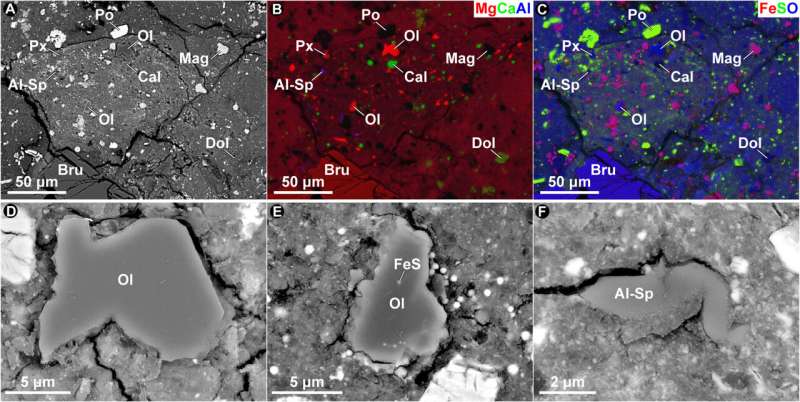December 19, 2022 report
Isotopic signatures in Ryugu suggest it formed close to comets along with some unique minerals

Bob Yirka
news contributor

An international team of researchers studying material from the asteroid Ryugu returned to Earth by the Hayabusa-2 Japanese space probe has found evidence that the asteroid formed in an outer part of the solar system, near where comets tend to form.
In their paper published in the journal Science Advances, they also note that some of the material found in Ryugu appears to have come from materials that were pulled from the inner parts of the solar system to the outer parts.
Two years ago, dust samples collected from the asteroid Ryugu were returned to Earth courtesy of the Japanese spacecraft Hayabusa2. Since that time, various research groups have been studying the samples to learn more about asteroids and the formation of planetary bodies in the solar system.
In this new effort, the researchers focused their attention on minerals found in the dust samples. They found evidence of amino acids along with carbonate minerals—materials that tend to form in low-temperature, watery environments. Such evidence strongly suggests that the asteroid was formed in an outer part of the solar system.
The researchers also found many similarities between Ryugu and Ivuna—a carbonaceous chondrite meteor found many years ago in Tanzania—the copper and zinc isotopes were very much alike.
Some material in the Ryugu dust could not have formed in the outer solar system—minerals such as spinel, olivine and perovskite, which all form at high temperatures. The researchers found that the ratios of isotopes of oxygen 16 in some cases were rich, but in other cases, were poor. And they also found that some of the isotopic ratios were similar to those found by researchers studying samples brough back from the Wild 2 comet.
Taken together, the researchers suggest the mineral evidence indicates that Ryugu formed in a part of the outer solar system near where most comets form. During its formation, some materials that originated in the inner solar system made their way to the outer solar system and collided with the newly forming asteroid, adding to its makeup.
Written for you by our author —this article is the result of careful human work. We rely on readers like you to keep independent science journalism alive. If this reporting matters to you, please consider a (especially monthly). You'll get an ad-free account as a thank-you.
More information: Noriyuki Kawasaki et al, Oxygen isotopes of anhydrous primary minerals show kinship between asteroid Ryugu and comet 81P/Wild2, Science Advances (2022).
Journal information: Science Advances
© 2022 Science X Network





















